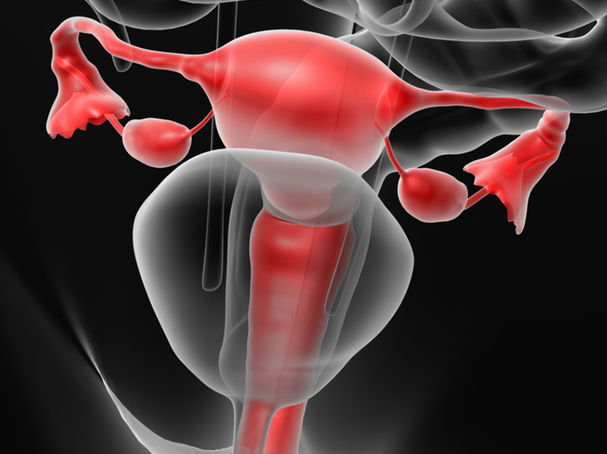Milestones for five year olds
Developmental Milestones: 4 to 5 Year Olds (Preschool)
From 4 to 5 years old, your child’s gross motor skills (using their arms and legs to move and play) and their fine motor skills (working on crafts and puzzles) are still developing. Play time becomes increasingly imaginative and is an important part of children’s growth.
Developmental Milestones
Doctors use certain milestones to tell if a child is developing as expected. There’s a wide range of what is considered normal, so some children gain skills earlier or later than others. Children who were born prematurely reach milestones later in life. Always talk with your doctor about your child’s progress, especially if there are concerns.
What can my 4- to 5-year-old child do at this age?
As your child continues to grow, you will notice new and exciting abilities that your child develops. While children may progress at different rates, the following are some of the common milestones children may reach in this age group:
4-year-olds:
- Sing songs
- Skip and hop on one foot
- Catch and throw a ball overhand
- Walk downstairs alone
- Draw a person with three separate body parts
- Build a block tower with 10 blocks
- Understand the difference between fantasy and reality
- Draw a circle and square
- Dress themselves
- Able to fasten large buttons without help
- Pull up a zipper after it is fastened
5-year-olds:
- Jump rope
- Walk backward
- Balance on one foot for at least 5 seconds
- Use scissors
- Begin learning how to tie shoes
- Draw a triangle and diamond
- Draw a person with six body parts
- Know address and phone number
- Recognize and recite the alphabet
- Write first name
- Start to help with chores around the house
- Start to lose their baby teeth
What can my 4- to 5-year-old child say?
Speech development in children is very exciting for parents as they watch their children become social beings that can interact with others. At this age, a child can usually understand that letters and numbers are symbols of real things and ideas, and that they can be used to tell stories and offer information. Most will know the names and gender of family members and other personal information. They often play with words and make up silly words and stories.
4 and 5-year-olds vocabulary is between 1,000 and 2,000 words. Speech at this age should be completely understandable, although there may be some developmental sound errors and stuttering, particularly among boys.
While every child develops speech at his or her own rate, the following are some of the common milestones children may reach in this age group:
4-year-olds:
- May put together four to five words into a sentence
- Will ask questions constantly
- May know one color or more
- Likes to tell stories
- May use some “bad” words (if he or she has heard them spoken repeatedly)
5-year-olds:
- May put together six to eight words into a sentence
- May know four or more colors
- Knows the days of the week and months
- Can name coins and money
- Can understand commands with multiple instructions
- Talks frequently
What does my 4- to 5-year-old child understand?
As a child’s vocabulary increases, so does his/her understanding and awareness of the world around them. Children at this age begin to understand concepts and can compare abstract ideas.
Children at this age begin to understand concepts and can compare abstract ideas.
While children may progress at different rates, the following are some of the common milestones children may reach in this age group:
4-year-olds:
- Begins to understand time
- Begins to become less aware of only one’s self and more aware of people around him/her
- May obey parent’s rules, but does not understand right from wrong
- Believes that his or her own thoughts can make things happen
5-year-olds:
- Increased understanding of time
- Curious about real facts about the world
- May compare rules of parents with that of friends
Wellness and Fitness Milestones
By the time kids are 3 to 5 years old, their physical skills, like running, jumping, kicking, and throwing, have come a long way. Now they’ll continue to refine these skills and build on them to learn more complex ones. Take advantage of your child’s natural tendency to be active.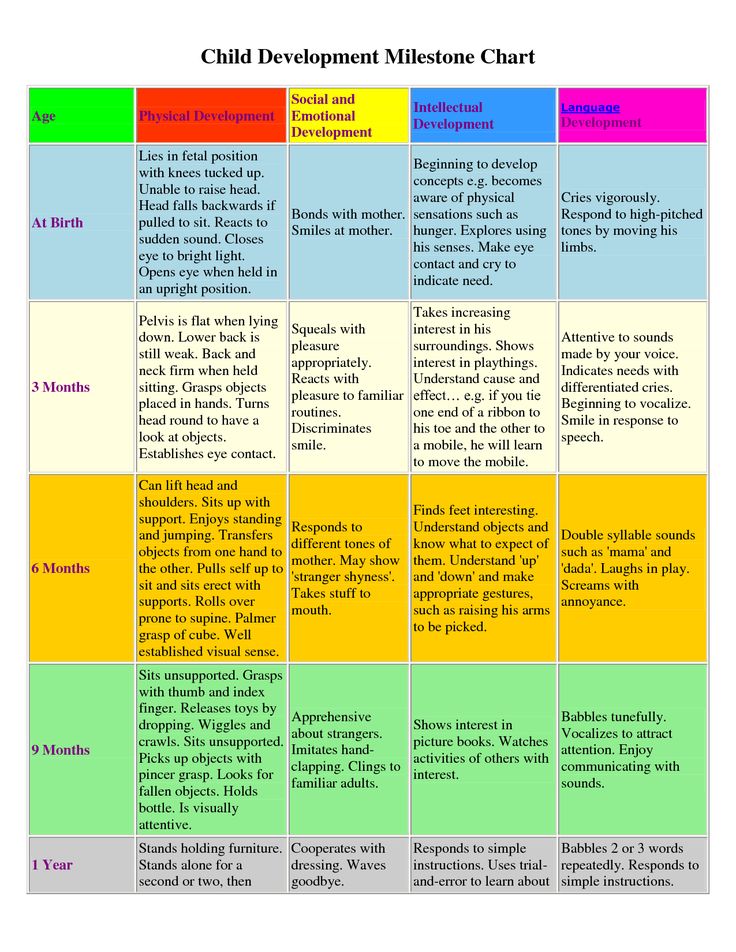 Regular physical activity promotes healthy growth and development and learning new skills builds confidence.
Regular physical activity promotes healthy growth and development and learning new skills builds confidence.
How active should my child be at this age?
Kids at this age are learning to hop, skip and jump forward. They are eager to show off how they can balance on one foot, catch a ball or do a somersault. Preschoolers and kindergarteners also might enjoy swimming, playing on a playground, dancing and riding a tricycle or bicycle with training wheels.
Physical activity guidelines recommend that preschoolers and kindergarteners should:
- Be physically active throughout the day
- Move and engage in both active play and structured (adult-led) physical activities
- Do activities such as jumping, hopping and tumbling to strengthen bones and muscles
Should my 4- to 5-year-old child participate in sports?
Many parents look into organized sports to get 4 and 5-year-olds active. The average preschooler has not mastered the basics, such as throwing, catching and taking turns. Even simple rules may be hard for them to understand, as any parent who has watched their child run the wrong way during a game knows.
Even simple rules may be hard for them to understand, as any parent who has watched their child run the wrong way during a game knows.
Starting too young can also be frustrating for kids and may discourage future participation in sports. If you decide to sign your child up for soccer or another team sport, be sure to choose a league that is right for their age and developmental stage. A peewee league that focuses on fun and learning the fundamentals might be great for a child still in preschool.
Family Fitness Tips
Playing together, running in the backyard or using playground equipment at a local park can be fun for the entire family. Other activities to try together, or for a group of preschoolers to enjoy, include:
- Playing games such as “Duck, Duck, Goose” or “Follow the Leader,” then mixing it up with jumping, hopping and walking backward
- Kicking a ball back and forth or into a goal
- Hitting a ball off a T-ball stand
- Playing freeze dance or freeze tag
Kids can be active even when they’re indoors. Designate a safe play area and try some active inside games such as:
Designate a safe play area and try some active inside games such as:
- Treasure hunt: Hide “treasures” throughout the house and provide clues to their locations
- Obstacle course: Set up an obstacle course with chairs, boxes, and toys for the kids to go over, under, through and around
- Soft-ball games: Use soft foam balls to play indoor basketball, bowling, soccer or catch. You can even use balloons to play volleyball or catch
How long should my 4- to 5-year-old sleep?
4 to 5-year-olds should be sleeping around 10-12 hours at night. Those who get enough rest may no longer need a daytime nap and can benefit from some quiet time in the afternoon. This is the age where they might be in preschool or in kindergarten. As they give up naps, they may go to bed at night earlier than they did as toddlers.
Check out our guide about Healthy Sleep for Children for more info.
Communication Milestones
Communicating with our kids is one of the most pleasurable and rewarding parts of parenting. Children learn by absorbing information through daily interactions and experiences not only with us, but with other adults, family members, other kids, and the world.
Children learn by absorbing information through daily interactions and experiences not only with us, but with other adults, family members, other kids, and the world.
Between the ages of 4 and 5, many kids enter preschool or kindergarten programs, with language skills a key part of learning in the classroom.
How does my 4- to 5-year-old child interact with others?
A very important part of growing up is the ability to interact and socialize with others. This can be a frustrating transition for the parent as children go through different stages, some of which are not always easy to handle. While every child is unique and will develop different personalities, the following are some of the common behavioral traits that may be present in your child:
4-year-olds can:
- Be very independent and may want to do things on his or her own
- Be selfish and do not like to share
- Be moody; mood swings are common in this age group
- Be aggressive during mood swings towards family members
- Have a number of fears
- Have imaginary playmates
- Enjoy exploring the body and may play doctor and nurse
- “Run away” or threaten to do so
- Fight with siblings
- Play with others in groups
5-year-olds can:
- Generally, be more cooperative and responsible than 4-year-olds
- Be eager to please others and make them happy
- Have good manners
- Dress self completely without help
- Get along well with parents
- Enjoy cooking and playing sports
- Become more attached to parent as they enter school
Interacting with Your Child
Kids learn more through interactive conversation and play. Reading books, singing, playing word games and simply talking to kids will increase their vocabulary while providing increased opportunities to develop listening skills. As kids gain language skills, they also develop their conversational abilities. Kids 4 to 5 years old can follow more complex directions and enthusiastically talk about things they do. They can make up stories, listen attentively to stories and retell stories.
Reading books, singing, playing word games and simply talking to kids will increase their vocabulary while providing increased opportunities to develop listening skills. As kids gain language skills, they also develop their conversational abilities. Kids 4 to 5 years old can follow more complex directions and enthusiastically talk about things they do. They can make up stories, listen attentively to stories and retell stories.
Here some ways you can help boost your child’s communication skills:
- Talk about the day’s activities
- Talk with your child about the books you read together
- Talk with your child about the TV programs and videos you watch together
- Keep books, magazines, and other reading material where kids can reach them without help
- Help kids create their own “This Is Me” or “This Is Our Family” album with photographs or mementos
How can I help increase my preschool child’s social ability?
Consider the following as ways to foster your preschool child’s social abilities:
- Offer compliments for good behavior and achievements
- Encourage your child to talk to you and be open with his or her feelings
- Read to your child, sing songs and talk with him or her
- Spend quality time with your child and show him or her new experiences
- Encourage your child to ask questions and explore
- Encourage physical activity with supervision
- Arrange times for your child to be with other children, such as in play groups
- Give your child the chance to make choices, when appropriate
- Use time-out for behavior that is not acceptable
- Encourage your child to express his or her anger in an appropriate manner
- Limit television watching (or other screen time) to 1 to 2 hours a day.
 Use free time for other more productive activities.
Use free time for other more productive activities.
When should I call the doctor?
You should talk to your doctor if you suspect your child has a problem with hearing, language skills or speech clarity. A hearing test may be one of the first steps to find out if your child has a hearing problem.
Communication problems among kids in this age group include:
- Hearing problems
- Trouble following directions
- Trouble asking or answering questions
- Difficulty holding a conversation
- Poor vocabulary growth
- Trouble learning preschool concepts, such as colors and counting
- Stuttering
- Trouble putting sentences together
- Unclear speech
Some kids will outgrow these problems. Others might need speech therapy or further evaluation. This is especially important to assess at a young age because some children that have difficulty with communication may get frustrated, angry and even aggressive because they cannot relay their thoughts and feelings clearly.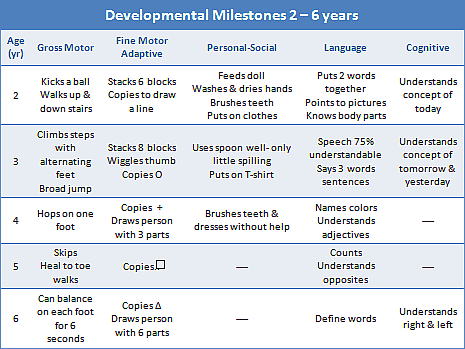
Reviewed by Dr. Priya Mody, Pediatric & Adult Medicine, CHOC Primary Care – May 2021
Developmental milestones record - 5 years: MedlinePlus Medical Encyclopedia
URL of this page: //medlineplus.gov/ency/article/002016.htm
To use the sharing features on this page, please enable JavaScript.
This article describes the expected skills and growth markers of most 5-year-old children.
Physical and motor skill milestones for a typical 5-year-old child include:
- Gains about 4 to 5 pounds per year (1.8 to 2.25 kilograms)
- Grows about 2 to 3 inches per year (5 to 7.5 centimeters)
- Vision reaches 20/20
- First adult teeth start breaking through the gum (most children do not get their first adult teeth until age 6)
- Has better coordination (getting the arms, legs, and body to work together)
- Skips, jumps, and hops with good balance
- Stays balanced while standing on one foot with eyes closed
- Shows more skill with simple tools and writing utensils
- Can copy a triangle
- Can use a knife to spread soft foods
Sensory and mental milestones:
- Has a vocabulary of more than 2,000 words
- Speaks in sentences of 5 or more words, and with all parts of speech
- Can identify different coins
- Can count to 10
- Knows telephone number
- Can properly name the primary colors, and possibly many more colors
- Asks deeper questions that address meaning and purpose
- Can answer "why" questions
- Is more responsible and says "I'm sorry" when they make mistakes
- Shows less aggressive behavior
- Outgrows earlier childhood fears
- Accepts other points of view (but may not understand them)
- Has improved math skills
- Questions others, including parents
- Strongly identifies with the parent of the same sex
- Has a group of friends
- Likes to imagine and pretend while playing (for example, pretends to take a trip to the moon)
Ways to encourage a 5-year-old's development include:
- Reading together
- Providing enough space for the child to be physically active
- Teaching the child how to take part in -- and learn the rules of -- sports and games
- Encouraging the child to play with other children, which helps develop social skills
- Playing creatively with the child
- Limiting both the time and content of television and computer viewing
- Visiting local areas of interest
- Encouraging the child to perform small household chores, such as helping set the table or picking up toys after playing
Normal childhood growth milestones - 5 years; Childhood growth milestones - 5 years; Growth milestones for children - 5 years; Well child - 5 years
Bamba V, Kelly A. Assessment of growth. In: Kliegman RM, St. Geme JW, Blum NJ, Shah SS, Tasker RC, Wilson KM, eds. Nelson Textbook of Pediatrics. 21st ed. Philadelphia, PA: Elsevier; 2020:chap 27.
Assessment of growth. In: Kliegman RM, St. Geme JW, Blum NJ, Shah SS, Tasker RC, Wilson KM, eds. Nelson Textbook of Pediatrics. 21st ed. Philadelphia, PA: Elsevier; 2020:chap 27.
Carter RG, Feigelman S. The preschool years. In: Kliegman RM, St. Geme JW, Blum NJ, Shah SS, Tasker RC, Wilson KM, eds. Nelson Textbook of Pediatrics. 21st ed. Philadelphia, PA: Elsevier; 2020:chap 24.
Updated by: Neil K. Kaneshiro, MD, MHA, Clinical Professor of Pediatrics, University of Washington School of Medicine, Seattle, WA. Also reviewed by David C. Dugdale, MD, Medical Director, Brenda Conaway, Editorial Director, and the A.D.A.M. Editorial team.
The most important milestones in the life of St. Macarius
Go to the main page of the magazine "Alpha and Omega"
After a short, three-year abbotship in the Luzhetsky Monastery[1], the Lord called Archimandrite Macarius to the hierarchal service in the Russian Church at the oldest cathedra of Veliky Novgorod and Pskov.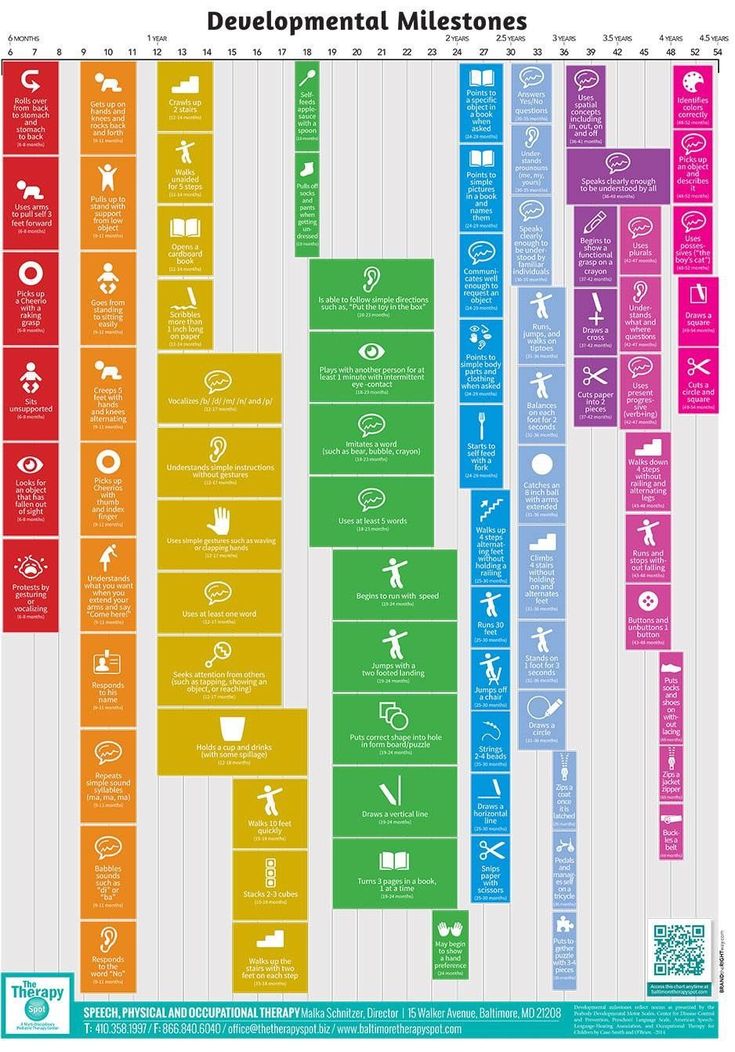 From the announcement of his episcopal consecration, his name begins to appear in chronicles. Depending on the chronicle, the nature of this record is different. So, in the Kholmogory chronicle under 1526 it very briefly says: “The same summer, the lord of the Novgorod Makarei was installed” [2]. The Resurrection Chronicle, contemporary to the event described, speaks in more detail about ordination, naming the previous place of service of the Saint: “7034. On the same winter, March 4, His Grace Daniil the Metropolitan appointed Macarius Archimandrite of Luzhkov as Archbishop of Veliky Novgorod and Pskov”[3]. In the Novgorod Chronicles, it is added that the consecration took place “under the right-believing Grand Duke Vasily Ivanovichi” on the day of memory of “our reverend father Erasim on the Jordan”, on the third week of Great Lent[4]. In the 4th Novgorod Chronicle, according to the list of N. Nikolsky, the date of the bishop's naming of the Saint is also mentioned: second week of Lent, on Monday.
From the announcement of his episcopal consecration, his name begins to appear in chronicles. Depending on the chronicle, the nature of this record is different. So, in the Kholmogory chronicle under 1526 it very briefly says: “The same summer, the lord of the Novgorod Makarei was installed” [2]. The Resurrection Chronicle, contemporary to the event described, speaks in more detail about ordination, naming the previous place of service of the Saint: “7034. On the same winter, March 4, His Grace Daniil the Metropolitan appointed Macarius Archimandrite of Luzhkov as Archbishop of Veliky Novgorod and Pskov”[3]. In the Novgorod Chronicles, it is added that the consecration took place “under the right-believing Grand Duke Vasily Ivanovichi” on the day of memory of “our reverend father Erasim on the Jordan”, on the third week of Great Lent[4]. In the 4th Novgorod Chronicle, according to the list of N. Nikolsky, the date of the bishop's naming of the Saint is also mentioned: second week of Lent, on Monday. The same summer, on the 4th day of March, on the 3rd week of Lent, under the right-believing Grand Duke Vasily Ivanovich and under Metropolitan Danilo, I installed Bishop Macarius in Novgorod ”[5]. Another list of chronicles specifies that it was on the day of remembrance of the Monk Gerasim, “who is on the Jordan”[6]. According to the testimonies of foreigners who visited our country at that time, candidates for bishops “are chosen by lot from the most worthy candidates”[7].
The same summer, on the 4th day of March, on the 3rd week of Lent, under the right-believing Grand Duke Vasily Ivanovich and under Metropolitan Danilo, I installed Bishop Macarius in Novgorod ”[5]. Another list of chronicles specifies that it was on the day of remembrance of the Monk Gerasim, “who is on the Jordan”[6]. According to the testimonies of foreigners who visited our country at that time, candidates for bishops “are chosen by lot from the most worthy candidates”[7].
This meager information can supplement the liturgical data on the appointment of bishops in Ancient Rus'. At the beginning, the assembled saints, having performed a short prayer service, name the names of possible candidates, a list of which was then brought to the Metropolitan. The latter, “having entered the usual place where he prays,” put the scroll before the icon of the Savior or the Mother of God and began to pray. Having prayed “pleasantly, even more so with tears, shutting himself alone,” the Metropolitan unpacked the scroll, examined “the written names of three” and chose one of them, “if he wants to”[8]. Unfortunately, the names of two other candidates for Novgorod lords are not known. This so-called “Charter is worthy of electing a bishop” was to take place before February 26, that is, before the naming of St. Macarius, and, consequently, Archimandrite Macarius should have arrived in Moscow even earlier. It can be assumed that one of the most significant last services and rites in the Luzhetsky Monastery, performed by Archimandrite Macarius, was the Rite of Forgiveness before the start of Great Lent on March 11, which probably had a farewell character in a broader sense.
Unfortunately, the names of two other candidates for Novgorod lords are not known. This so-called “Charter is worthy of electing a bishop” was to take place before February 26, that is, before the naming of St. Macarius, and, consequently, Archimandrite Macarius should have arrived in Moscow even earlier. It can be assumed that one of the most significant last services and rites in the Luzhetsky Monastery, performed by Archimandrite Macarius, was the Rite of Forgiveness before the start of Great Lent on March 11, which probably had a farewell character in a broader sense.
On the day of the naming, that is, February 26, which liturgical monuments also call “evangelism”, or on one of the next days, the Kissing Rite was performed, when the newly elected “introduced himself to the Metropolitan and the bishops of the electors”[9]. Finally, on March 4, on the third week of Great Lent, that is, the Adoration of the Cross, the hierarchal consecration was performed in the Dormition Kremlin Cathedral.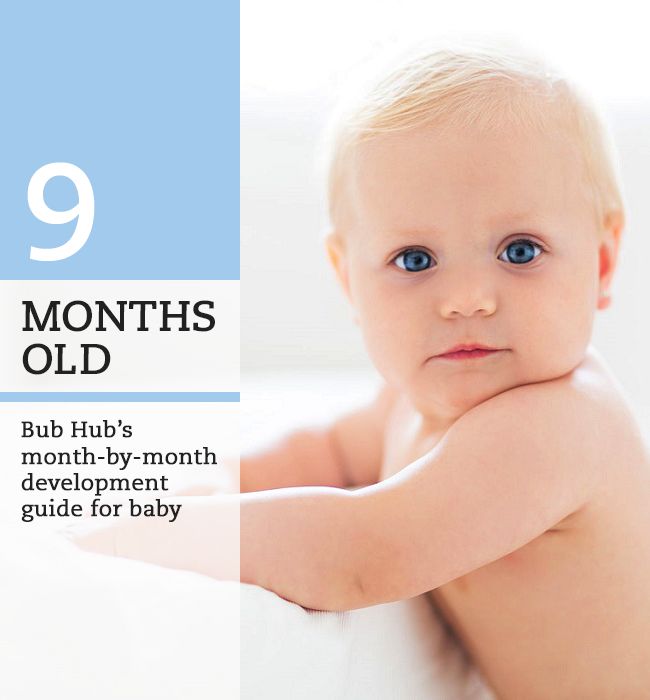
Saint Macarius Metropolitan of Moscow.
Tapestry. 2000
The Divine Liturgy was preceded by the Order of the Lesser Sign, the main part of which is the Confession of the Orthodox Faith to the newly delivered[10]. During the Liturgy at the Trisagion, a new hierarch of the Russian Church was ordained. A distinctive feature of the Novgorod lord at that time was a white hood, which was assigned to him. Undoubtedly, of all the proteges-hierarchs of Metropolitan Daniel, Saint Macarius was the most famous in history[11].
Chronicles do not name the hierarchs participating in the consecration, but it was headed by the All-Russian Metropolitan Daniel, who three years earlier raised Saint Macarius to all spiritual ranks, from reader to archimandrite. All this characterizes the personal relationship of these two hierarchs, as well as the close ties between the monasteries of St. Pafnuty of Borovsky and Joseph of Volotsky. Based on the reference work of P. Stroev, it can be said that Bishop Jonah of Ryazan and Murom (1522–1547; appointed in 1522 from the archimandrites of the Novgorod Yuryev Monastery), Bishop Akakiy of Tver and Kashinsky (1522–1567), Bishop of Smolensk Joseph (1515–1532), Bishop of Suzdal and Tarusa Gennady (1517–1531), Bishop of Vologda Alexy (1525–1543), Bishop Vassian of Kolomna (Toporkov; 1525–1542), Bishop of Sarsk and Podonsk Dositheus (Zabela; 1508–1544)[ 12]. But it is likely that not all of them came to Moscow, and the hierarchs who did not come sent their letters of freedom.
Stroev, it can be said that Bishop Jonah of Ryazan and Murom (1522–1547; appointed in 1522 from the archimandrites of the Novgorod Yuryev Monastery), Bishop Akakiy of Tver and Kashinsky (1522–1567), Bishop of Smolensk Joseph (1515–1532), Bishop of Suzdal and Tarusa Gennady (1517–1531), Bishop of Vologda Alexy (1525–1543), Bishop Vassian of Kolomna (Toporkov; 1525–1542), Bishop of Sarsk and Podonsk Dositheus (Zabela; 1508–1544)[ 12]. But it is likely that not all of them came to Moscow, and the hierarchs who did not come sent their letters of freedom.
In ancient times, the celebration of the day on which some significant event took place was especially honored[13]. It is significant that the icon “Gerasim, who is on the Jordan with a lion”[14], has been preserved from the Makaryevskaya icon-painting workshop, on the feast day of which the hierarchal consecration of the Hierarch was performed.
The Pskov chronicler speaks of the great role played by the Grand Duke Vasily III in resolving the issue of appointing St. Macarius Archbishop of Novgorod. Even earlier, the elder of the Pskov Spassky Eleazarov Monastery Filofei, known for his statements about Moscow as the third Rome, wrote to the Grand Duke Vasily III: “...may the bishops fill the holy cathedral churches, may the holy church of God not widow in your kingdom”[15]. Perhaps there were other appeals to the prince. The ambassador of the Austrian emperor Sigismund Herberstein, who was in Moscow in 1526, noted: “Finally, after the intensified requests of citizens and subjects not to deprive them of the bishop forever, he (Vasily III - a. M .) appointed a new one when we were there”[16].
Macarius Archbishop of Novgorod. Even earlier, the elder of the Pskov Spassky Eleazarov Monastery Filofei, known for his statements about Moscow as the third Rome, wrote to the Grand Duke Vasily III: “...may the bishops fill the holy cathedral churches, may the holy church of God not widow in your kingdom”[15]. Perhaps there were other appeals to the prince. The ambassador of the Austrian emperor Sigismund Herberstein, who was in Moscow in 1526, noted: “Finally, after the intensified requests of citizens and subjects not to deprive them of the bishop forever, he (Vasily III - a. M .) appointed a new one when we were there”[16].
E. Golubinsky explains the choice of the candidacy of St. Macarius by the fact that in Mozhaisk there was a famous image of St. Nicholas, “to worship which the sovereigns used to go: during his trips to Mozhaisk, Vasily Ivanovich could get acquainted with Macarius, as with the first person in the local city clergy, what was Archimandrite Luzhetsky”[17]. In addition, it can be assumed that the Grand Duke could have met him as early as 1523 when a Borovsky monk was appointed to the Luzhetsk abbot[18].
In addition, it can be assumed that the Grand Duke could have met him as early as 1523 when a Borovsky monk was appointed to the Luzhetsk abbot[18].
As E. Golubinsky notes, Saint Macarius arrived in Novgorod five months after his consecration[19]. In a letter of notice sent earlier, the newly consecrated Vladyka wrote to his flock about the needs of the Grand Duke's family: his blessed princess Elena, so that the Lord God would give them the fruit of their womb. And then the chronicler continues: “The Great Prince loves him very much and ask blessed from the Saint, and all the people of the church and all the people bow to him and pray for them to God; he said: I pray to God, the king, as if God would create a soul-beneficial one for you and all people ”[20]. The observations of a Pskov eyewitness (I think there were such in Moscow both from Novgorod and Pskov) complete the descriptions of the long-awaited consecration. “Thus,” writes N. Lebedev, “Macary received in the deeply believing grand-ducal house the same significance that the Monk Pafnuty had”[21].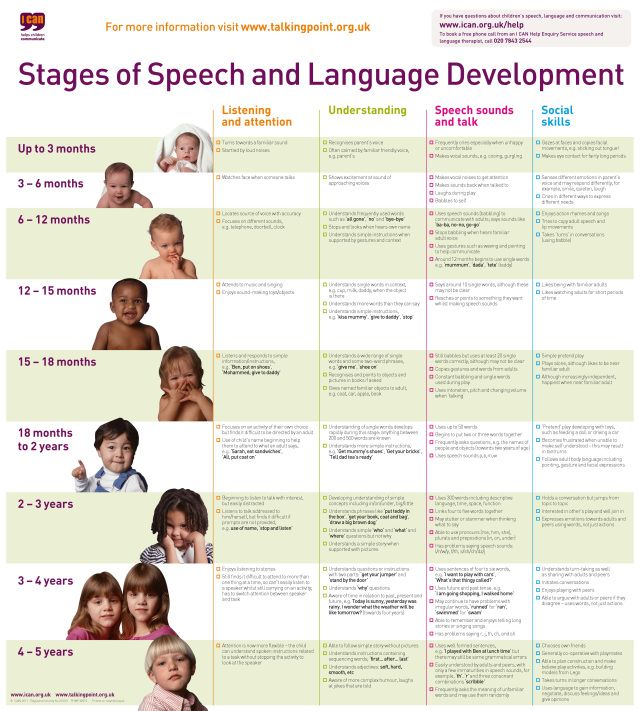
Chronicles mention another episcopal consecration that soon followed. The Postnikovsky chronicler names its exact date - a week after the consecration of St. Macarius, and, therefore, he took part in it. “The same month, on the 11th day of the week of the 4th Lent, Archimandrite Kirill was appointed to Rostov and Yaroslavl, an archimandrite from Suzdal from the Efimiev Monastery”[22]. One must think that the feasts of Pascha, the Holy Trinity, the apostles Peter and Paul passed for the Saint in Moscow. During this time, he could pay a farewell visit to the Luzhetsk monastery in Mozhaisk.
Finally, “after a few days, calling him Metropolitan Danilo of All Russia to talk to him about salvation, and let him go to Veliky Novgorod; Archbishop Macarei, bowing to him, said: I pray thee, holy father, pray to God for me, so that I could not do everything powerfully, I promised about him; answering the Metropolitan speech to him: go, child, in peace. Lord build your way well, pray to God for us; and laying his hand on blessing. And the Great Prince let him go with great honour”[23]. At the same time, the Grand Duke gave Saint Macarius "the entire treasury of the old archbishops (Novgorod - a. M .), and the boyars gave him theirs. E. Golubinsky considers the latter as a sign of good will towards the Saint on the part of the Grand Duke[24]. In one of the books, Vladyka Macarius made the following memorable entry: “The Rule of Sophia’s Old, the Great Prince Vasilei Ivanovich of All Rus' gave them to Archbishop Macarius, as he was released from Moscow to Novgorod, and the Great Prince in Sophia ordered them to be laid down in history in the summer of 7034”[ 25].
And the Great Prince let him go with great honour”[23]. At the same time, the Grand Duke gave Saint Macarius "the entire treasury of the old archbishops (Novgorod - a. M .), and the boyars gave him theirs. E. Golubinsky considers the latter as a sign of good will towards the Saint on the part of the Grand Duke[24]. In one of the books, Vladyka Macarius made the following memorable entry: “The Rule of Sophia’s Old, the Great Prince Vasilei Ivanovich of All Rus' gave them to Archbishop Macarius, as he was released from Moscow to Novgorod, and the Great Prince in Sophia ordered them to be laid down in history in the summer of 7034”[ 25].
The departure of the Saint was undoubtedly preceded by a prayer service in the Assumption Cathedral. Finally, Vladyka of Novgorod went to the place of his archpastoral service, where the episcopal cathedra had long been widowed. In the annals we read about his arrival at the department: “July 29, a week, in memory of the holy martyr Kalinnik, the God-loving Archbishop Makarei arrived from Moscow to Veliky Novgorod, and came out to meet him with the Cathedral of the Holy Mother of God with crosses, and all the priests of Veliky Novgorod, and all the dignitaries of Christ the sovereign of the Grand Duke, and all the people of Veliky Novgorod , from young to old, with wives and children, to the Slavic end; and 1st place the archbishop on yourself with all the rank of hierarch in the church in the glorious prophet Elijah”[26].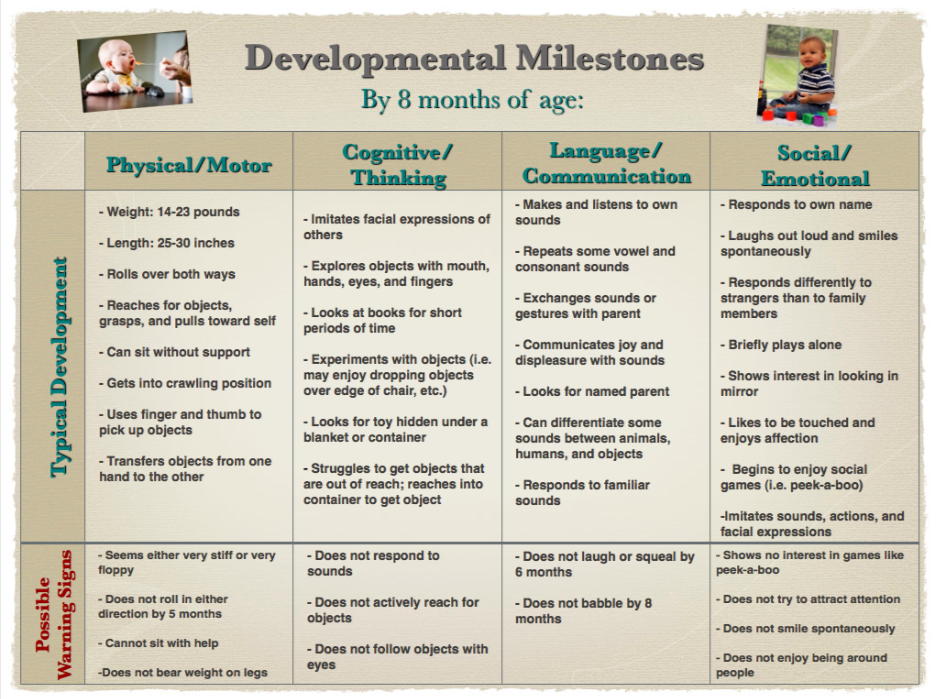 This is how the chronicler Chin briefly describes “the entry into the flock of a new bishop,” St. Macarius[27]. The Pskov chronicler notes the heartfelt sermon of the newly arrived bishop, which he delivered in the Sofia Cathedral: “He was enlightened by the power of God, began to talk to the people with many stories, and it seemed that God had given him wisdom in Divine Scripture, just understand everything. The saint sat on the archbishop's table, and there was great joy among the people, not only in Veliky Novgorod, but also in Pskov and everywhere. And then the chronicler joyfully remarks: “and there was bread for deshov, and it was easier for the monastery, and there was great intercession for people, and there was a feeder for orphans”[28]. The Novgorod chronicler echoes him: “Be with this archbishop, the mistress Macarius, in all his archdiocese, the Lord God sent His mercy to His people, with his prayers, the times are quiet and cool, and great abundance abounded” [29].
This is how the chronicler Chin briefly describes “the entry into the flock of a new bishop,” St. Macarius[27]. The Pskov chronicler notes the heartfelt sermon of the newly arrived bishop, which he delivered in the Sofia Cathedral: “He was enlightened by the power of God, began to talk to the people with many stories, and it seemed that God had given him wisdom in Divine Scripture, just understand everything. The saint sat on the archbishop's table, and there was great joy among the people, not only in Veliky Novgorod, but also in Pskov and everywhere. And then the chronicler joyfully remarks: “and there was bread for deshov, and it was easier for the monastery, and there was great intercession for people, and there was a feeder for orphans”[28]. The Novgorod chronicler echoes him: “Be with this archbishop, the mistress Macarius, in all his archdiocese, the Lord God sent His mercy to His people, with his prayers, the times are quiet and cool, and great abundance abounded” [29].
The previous time for the Novgorod hierarchy was very difficult. The last Saint who died in the pulpit was Archbishop Jonah (†1470; commemorated November 5). The last hierarch elected by the Novgorodians themselves was his successor, Archbishop Theophilus, who shortly after the conquest of Novgorod in 1478 was “sent to the Chudov Monastery”[30]. Vladyka Sergius, the first elected and installed in Moscow, spent less than a year in the cathedra (1483-1484) and returned back to the Trinity-Sergius monastery. Saint Gennady, after twenty years of being a bishop (1484–1504), was dethroned by the Grand Duke and died at rest in the Miracle Monastery (†1505; commemorated December 4). The next Archbishop Serapion (1506–1509) spent the last years of his life in the Trinity-Sergius Monastery (†1516; commemorated May 16). And now, after 17 years of widowhood of the episcopal see, Novgorodians met their new lord.
The last Saint who died in the pulpit was Archbishop Jonah (†1470; commemorated November 5). The last hierarch elected by the Novgorodians themselves was his successor, Archbishop Theophilus, who shortly after the conquest of Novgorod in 1478 was “sent to the Chudov Monastery”[30]. Vladyka Sergius, the first elected and installed in Moscow, spent less than a year in the cathedra (1483-1484) and returned back to the Trinity-Sergius monastery. Saint Gennady, after twenty years of being a bishop (1484–1504), was dethroned by the Grand Duke and died at rest in the Miracle Monastery (†1505; commemorated December 4). The next Archbishop Serapion (1506–1509) spent the last years of his life in the Trinity-Sergius Monastery (†1516; commemorated May 16). And now, after 17 years of widowhood of the episcopal see, Novgorodians met their new lord.
Undoubtedly, the Saint did not come to Veliky Novgorod alone, but the composition of the numerous (one might assume) retinue of Archbishop Macarius is almost unknown.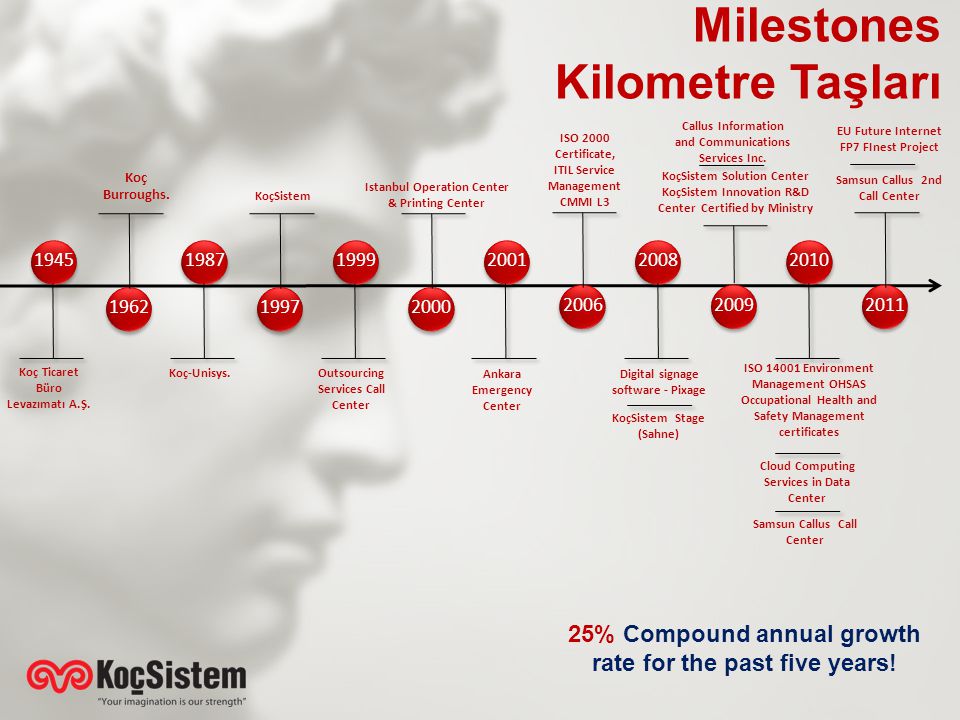 It could include, for example, the clerk A. Kvashnin, about whom S. B. Veselovsky writes: “Grand Duke Vasily Ivanovich appointed Andrei Kvashnin to Archbishop Macarius of Novgorod” [31]. Among various later acts, there is mentioned a barnkeeper who arrived with Vladyka and was then granted by the Saint to the Pskov clerks[32].
It could include, for example, the clerk A. Kvashnin, about whom S. B. Veselovsky writes: “Grand Duke Vasily Ivanovich appointed Andrei Kvashnin to Archbishop Macarius of Novgorod” [31]. Among various later acts, there is mentioned a barnkeeper who arrived with Vladyka and was then granted by the Saint to the Pskov clerks[32].
Thus began Archbishop Macarius' archpastoral activity in a vast ancient Russian diocese rich in spiritual and cultural traditions. Professor MDA I. N. Shabatin speaks about the date of the episcopal consecration of the Saint: “The day of March 4, 1526 opens the most fruitful sixteen-year period of the Saint’s activity in Novgorod. Namely, not “Novgorod activities”, but activities in Novgorod. The profound fundamental significance of such a formulation lies in the fact that during the years of his diocesan hierarchy Macarius did not confine himself to caring for his immediate flock, but lived and worked for the entire Russian Church, the entire Russian people, its state, its culture, its capital, Moscow. [33] .
[33] .
His ministry was very successful and fruitful. The chronicler says: “Be with this archbishop, the mistress Macarius, in all his archdiocese, the Lord God sent His mercy to His people, with his prayers, the times are quiet and cool, and the abundance of greatness abounded: a box, a hut, a zhita bought seven nougorok” [34 ]. Truly, as the Scripture says, “By the blessing of the righteous a city is exalted” (Proverbs 11:11). For the first time in history, the Novgorod Bishop became the Head of the Russian Church[35].
Time passed - and by the Providence of God the Saint was called to the highest service in the Church in the rank of Metropolitan. “And Macarius was the archbishop in Veliky Novgorod for 16 years, and taking him to the Metropolis in the reigning city of Moscow, in the summer of March 7050 on the 2nd day”[36]. The Piskarevsky Chronicler additionally reports that Vladyka arrived from Novgorod on March 9 on Thursday “to the Grand Duke”[37]. A whole week passed from the arrival of the future Primate in Moscow to his election as Metropolitan.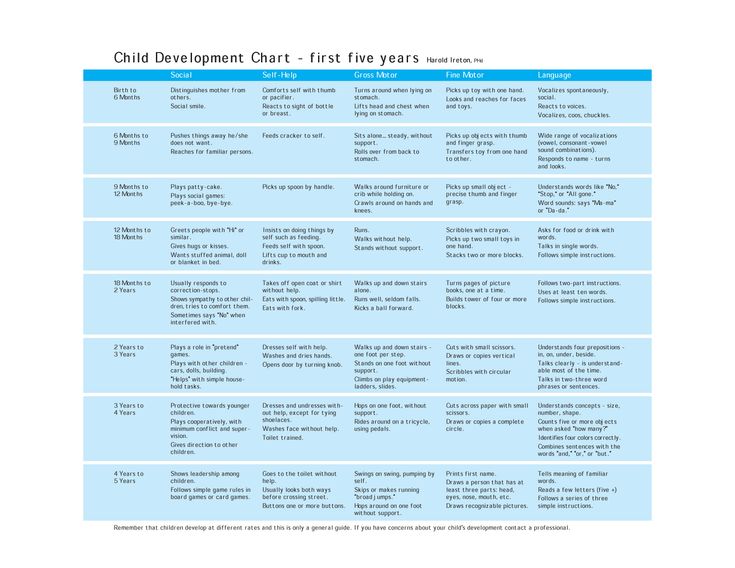 The text of the farewell letter, which St. Macarius wrote before his death in 1563, makes it possible to judge the events of those important days for him: Russian Metropolis, but also by the pious and Christ-loving Tsar himself and the Grand Duke Ivan Vasilyevich, autocrat of all Russia, but I, who am humble in many ways, deny myself according to the testimony of the Divine Scriptures, and I could not disobey, but I would be forced and put on the great throne of the Russian Metropolis by His Grace Archbishop Dositheus of Rostov and Yaroslavl, and all the Bishops of the Russian Metropolitanate with him, and all those like them with the Holy Council”[38]. The farewell letter of Metropolitan Macarius is supplemented by evidence from chronicles.
The text of the farewell letter, which St. Macarius wrote before his death in 1563, makes it possible to judge the events of those important days for him: Russian Metropolis, but also by the pious and Christ-loving Tsar himself and the Grand Duke Ivan Vasilyevich, autocrat of all Russia, but I, who am humble in many ways, deny myself according to the testimony of the Divine Scriptures, and I could not disobey, but I would be forced and put on the great throne of the Russian Metropolis by His Grace Archbishop Dositheus of Rostov and Yaroslavl, and all the Bishops of the Russian Metropolitanate with him, and all those like them with the Holy Council”[38]. The farewell letter of Metropolitan Macarius is supplemented by evidence from chronicles.
The most complete information about his primatial enthronement is contained in the Nikon chronicle: “By the grace of the Holy Spirit, by the election of the hierarch and the will of the Grand Duke Ivan Vasilyevich of All Russia, he was named Metropolis Macarius, Archbishop of Great Novagrad and Pskov; On March 16, on Thursday 4 weeks of Holy Lent, he was brought into the court of the Metropolitan, and placed on the high throne of the First Hierarch of Great Russia to the Metropolis of the same month 19, on week 4 of Holy Lent. And on his appointment was Archbishop Dositheus of Rostov, and Bishop of Suzdal Ferapont, and Gury of Smolensk, Iona Ryazansky, Akaki Tfersky, Vasian Kolomensky, Dosifius of Sarsky, Alexy of Vologotsky ”[39]. Thus, the primatial enthronement was headed by the oldest bishop, Archbishop Dositheos of Rostov, about whom the Rostov chronicler says: “... who was appointed Macarius Metropolitan of Moscow”[40]. The details of the consecration of Saint Macarius as a Metropolitan can be judged on the basis of the surviving Order of the appointment of his predecessor, Metropolitan Joasaph[41].
And on his appointment was Archbishop Dositheus of Rostov, and Bishop of Suzdal Ferapont, and Gury of Smolensk, Iona Ryazansky, Akaki Tfersky, Vasian Kolomensky, Dosifius of Sarsky, Alexy of Vologotsky ”[39]. Thus, the primatial enthronement was headed by the oldest bishop, Archbishop Dositheos of Rostov, about whom the Rostov chronicler says: “... who was appointed Macarius Metropolitan of Moscow”[40]. The details of the consecration of Saint Macarius as a Metropolitan can be judged on the basis of the surviving Order of the appointment of his predecessor, Metropolitan Joasaph[41].
Saint Macarius was placed on the Metropolitan throne from among the bishops. The previous similar appointment in the Russian Church was in 1473, when Bishop Gerontius of Kolomna was consecrated to the All-Russian Metropolitans. Subsequent Metropolitans - Zosima (1490–1494), Simon (1495–1511), Barlaam (1511–1521), Daniel (1522–1539), and Joasaph (1539–1542) were chosen from the abbots of the monasteries. The first Metropolitan of Moscow Rus', appointed from among the bishops, was the first autocephalous Metropolitan, Saint Jonah (1448-1461; commemorated March 31). Then Metropolitan Theodosius (1461-1464) was installed from the Rostov archbishops, Metropolitan Philip (1464-1473) from the Suzdal bishops, and, finally, Metropolitan Gerontius. In the interpretation of the 14th Apostolic Canon, compiled under Metropolitan Macarius and pasted into the Pilot Book, it is said about him: “... the fifth Metropolitan was appointed by his archbishops and bishops in Moscow in the cathedral church of the Assumption of the Most Pure Theotokos” [42]. This is also mentioned in the Life of St. Daniel of Pereslavl: “… the most venerable Archbishop of Velikag[o] Novagrad, God’s man, wondrous Macarius, was elevated to the great throne of the Russian Metropolia”[43].
The first Metropolitan of Moscow Rus', appointed from among the bishops, was the first autocephalous Metropolitan, Saint Jonah (1448-1461; commemorated March 31). Then Metropolitan Theodosius (1461-1464) was installed from the Rostov archbishops, Metropolitan Philip (1464-1473) from the Suzdal bishops, and, finally, Metropolitan Gerontius. In the interpretation of the 14th Apostolic Canon, compiled under Metropolitan Macarius and pasted into the Pilot Book, it is said about him: “... the fifth Metropolitan was appointed by his archbishops and bishops in Moscow in the cathedral church of the Assumption of the Most Pure Theotokos” [42]. This is also mentioned in the Life of St. Daniel of Pereslavl: “… the most venerable Archbishop of Velikag[o] Novagrad, God’s man, wondrous Macarius, was elevated to the great throne of the Russian Metropolia”[43].
Piety, authority, erudition, enlightenment, education, fame, but above all the Providence of God, elevated Saint Macarius to the primatial throne of the Russian Church.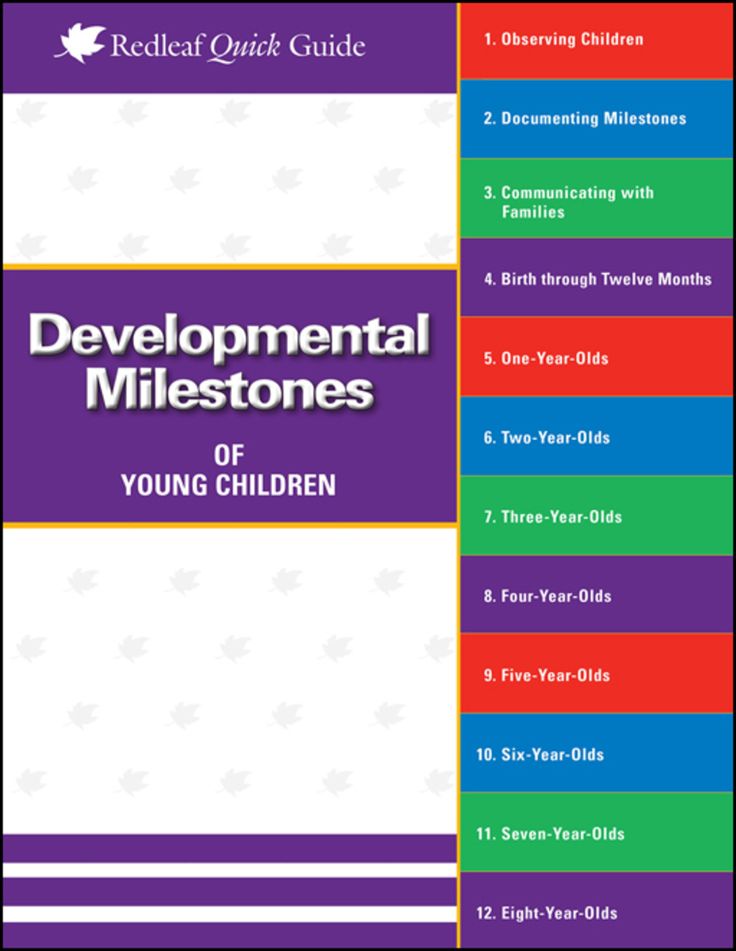 Meanwhile, some historians saw in the appointment of St. Macarius as a Metropolitan a manifestation of his ties with the Shuiskys, which at one time was given convincing criticism by the church historian E. E. Golubinsky[44]. The complexity of the fate of Metropolitans Varlaam, Daniel and Joasaph is confirmed by the arguments of E. E. Golubinsky[45]. Saint Macarius is the only Metropolitan whose primatial ministry began under two of his living predecessors, who were retired in monasteries. It was not easy earlier for Archbishop Macarius to start in Veliky Novgorod; a similar situation developed with his accession to the metropolitan see. However, his wise activity, both in Novgorod and in Moscow, served the good of the Russian Church and the Russian state, was fruitful, very successful, and his name is indelibly inscribed on the tablets of national history. By the time of his primatial enthronement, Metropolitan Macarius was about 60 years old. At this age he was called to lead the Russian Church.
Meanwhile, some historians saw in the appointment of St. Macarius as a Metropolitan a manifestation of his ties with the Shuiskys, which at one time was given convincing criticism by the church historian E. E. Golubinsky[44]. The complexity of the fate of Metropolitans Varlaam, Daniel and Joasaph is confirmed by the arguments of E. E. Golubinsky[45]. Saint Macarius is the only Metropolitan whose primatial ministry began under two of his living predecessors, who were retired in monasteries. It was not easy earlier for Archbishop Macarius to start in Veliky Novgorod; a similar situation developed with his accession to the metropolitan see. However, his wise activity, both in Novgorod and in Moscow, served the good of the Russian Church and the Russian state, was fruitful, very successful, and his name is indelibly inscribed on the tablets of national history. By the time of his primatial enthronement, Metropolitan Macarius was about 60 years old. At this age he was called to lead the Russian Church. In Moscow, he continued and developed his work, begun in Veliky Novgorod: he collects books, blesses the beginning of printing, convenes Councils, canonizes saints, takes care of correcting shortcomings, and fights heresy. Like St. Alexis (†1378; commemorated Feb. 12), former tutor of the young Demetrius of Donskoy, Metropolitan Macarius takes care of Ivan the Terrible[46], having crowned him, the first sovereign of Moscow, with a royal crown. The time of Metropolitan Macarius is a whole epoch in the Russian Church, a time of spiritual upsurge and flourishing of Orthodoxy. The hierarchal consecration of the Hierarch, as well as his Metropolitan enthronement, are important milestones in the personal life of the archpastor and, at the same time, important events in the life of the Church.
In Moscow, he continued and developed his work, begun in Veliky Novgorod: he collects books, blesses the beginning of printing, convenes Councils, canonizes saints, takes care of correcting shortcomings, and fights heresy. Like St. Alexis (†1378; commemorated Feb. 12), former tutor of the young Demetrius of Donskoy, Metropolitan Macarius takes care of Ivan the Terrible[46], having crowned him, the first sovereign of Moscow, with a royal crown. The time of Metropolitan Macarius is a whole epoch in the Russian Church, a time of spiritual upsurge and flourishing of Orthodoxy. The hierarchal consecration of the Hierarch, as well as his Metropolitan enthronement, are important milestones in the personal life of the archpastor and, at the same time, important events in the life of the Church.
List of abbreviations
| AAE | - | Acts collected in the libraries and archives of the Russian Empire by the Archaeographic Expedition of the Imperial Academy of Sciences. SPb., 1836. SPb., 1836. |
| AI | - | Historical acts collected and published by the Archeographic Commission. SPb., 1841, 1842. 5 T. |
| BT | - | Theological works. |
| GPNTB | - | State public scientific and technical library. |
| ZHMNP | - | Journal of the Ministry of Public Education. |
| ZHMP | - | Journal of the Moscow Patriarchy. |
| NGM | - | Novgorod State Museum. |
| PSRL | - | Complete collection of Russian chronicles. |
| RGADA | - | Russian State Archive of Ancient Acts. |
| RGB | - | Russian State Library. |
| TODRL | - | Proceedings of the Department of Old Russian Literature of the Institute of Russian Literature (Pushkin House).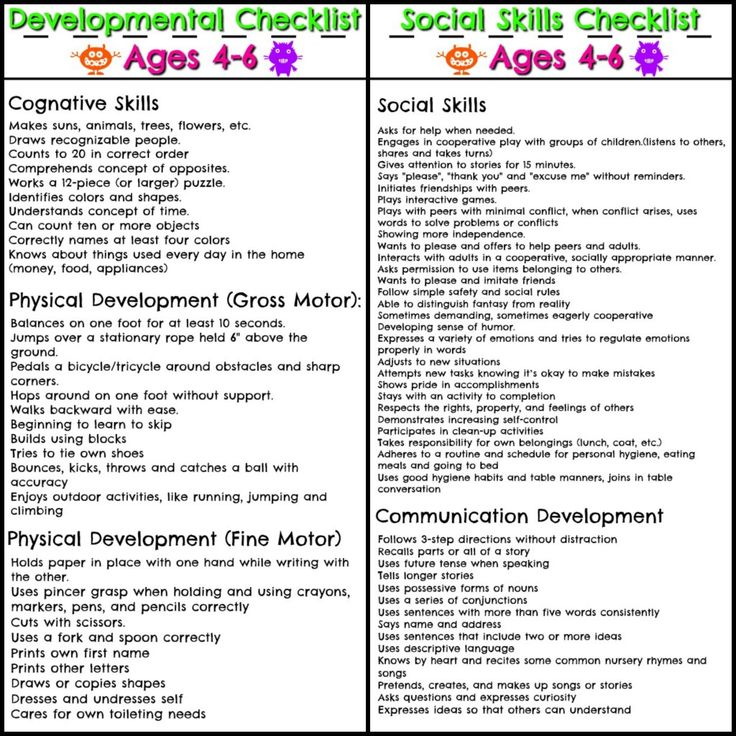 |
[1] PSRL (see the list of abbreviations at the end of the article). T. 33: Kholmogory chronicle. Dvina chronicler. L., 1977. S. 136.
[2] See Archimandrite Macarius (Veretennikov). Mozhaisk period of the All-Russian Metropolitan Macarius // Alpha and Omega. 1997. No. 3(14). pp. 173–182. aka . Mozhaisk period of the life of the All-Russian Metropolitan Macarius // Source study and local history in the culture of Russia. Collection for the 50th anniversary of Sigurd Ottovich Schmidt's service to the Institute of History and Archives. M., 2000. S. 71–76.
[3] PSRL. T. 8: Continuation of the chronicle according to the Voskresensky list. SPb., 1859. S. 271. See also: PSRL. T. 13: Chronicle collection, called the Patriarch's or Nikon's chronicle. Part 1. St. Petersburg, 1904, p. 45; Same. T. 20. Part 1: Lviv chronicle. St. Petersburg, 1910, pp. 403–404; Same. T. 26: Vologda-Perm Chronicle. M.–L., 1959. S. 313; Same. T. 6: Sofia chronicles. SPb., 1853. S. 264–265.
T. 6: Sofia chronicles. SPb., 1853. S. 264–265.
[4] PSRL. T. 3: Novgorod chronicles. SPb., 1841. S. 148, 185; Same. T. 30: Chronicler of Vladimir. Novgorod second (archive) chronicle. M., 1965. S. 176.
[5] PSRL. T. 4. Part 1: Novgorod fourth chronicle. Issue. 3. L., 1929. S. 613.
[6] Ibid. S. 547.
[7] Almazov A. Messages from Western foreigners of the 16th–17th centuries. on the celebration of the Sacraments in the Russian Church. Kazan, 1900. P. 46.
[8] Neselovsky A. Orders of consecrations and consecrations (Experience of historical and archaeological research). Kamenetz-Podolsk, 1906. P. 277. See also Dmitrievsky A. Divine service in the Russian Church in the 16th century. Part 1: Services of the circle of the week and year and the order of the Sacrament. Historical and archaeological research. Kazan, 1884. S. 369.
[9] Neselovsky A . Decree. op. S. 278; Dmitrievsky A. Decree. op. P. 370.
op. P. 370.
[10] Neselovsky A . Decree. op. Application. No. 22. S. XVI–XXI.
[11] See Zhmakin V . Metropolitan Daniel and his writings. M., 1881. S. 145.
[12] Stroev PM Lists of hierarchs and abbots of monasteries of the Russian Church. SPb., 1877. Stb. 414, 442, 590, 655, 730, 1030, 1034.
[13] See Abbot Macarius . Birch bark letters as a source of Russian church history (On the formulation of the question) / / BT. Sat. 24. M., 1983. P. 314.
[14] Antonova V., Mneva N . Catalog of ancient Russian painting. T. 2. M., 1963. S. 126–127. No. 518; Deacon P. Veretennikov . Saint Macarius, Archbishop of Veliky Novgorod and Pskov (1526–1542) // ZhMP. 1978. No. 8. S. 75. Note. 6.
[15] Monuments of literature of Ancient Rus'. The end of the XV - the first half of the XVI century. M., 1984. S. 438. From the Life of the Monk Varlaam Khutynsky, whom the Grand Duke especially revered, it is known that he had a vision of the Saint, who ordered the appointment of abbots in the Novgorod monasteries - Khutynsky, Yuryev and Antoniev ( Dmitriev L. A. Hagiographic Tales of the Russian North as literary monuments of the XIII–XVII centuries. The evolution of the genre of legendary biographical tales. L., 1973. S. 68).
A. Hagiographic Tales of the Russian North as literary monuments of the XIII–XVII centuries. The evolution of the genre of legendary biographical tales. L., 1973. S. 68).
[16] Herberstein S. Notes on Muscovy. Moscow, 1988. P. 148.
[17] Golubinsky E. E . History of the Russian Church. T. 2. Part 1. M., 1997. S. 746–747. See also: Zaustsinsky K. Macarius Metropolitan of All Russia // ZHMNP. 1881. No. 10. P. 213.
[18] The consecration of St. Macarius was the first after the Moscow prince entered into a second marriage with Elena Glinskaya. In this regard, some suggest that the story of the monastic tonsure of the first wife of the prince, Solomonia Saburova, could have got into the Pafnutiev-Borovsky monastery through Archbishop Macarius (see Kazakova NA Essays on the history of Russian social thought. First third of the 16th century. L., 1970. S. 212; Begunov Yu. K . The Tale of the Second Marriage of Vasily III //TODRL. T. 25. M.–L., 1970. S. 106; Nasonov A. N . History of Russian chronicle writing in the 11th–18th centuries. Essays and research. M., 1969. S. 390).
T. 25. M.–L., 1970. S. 106; Nasonov A. N . History of Russian chronicle writing in the 11th–18th centuries. Essays and research. M., 1969. S. 390).
[19] Golubinsky E. E . History of the Russian Church. T. 2. Part 1. S. 749. Approx. 3.
[20] Nasonov A . Pskov chronicles. M.–L., 1941. S. 103.
[21] Lebedev N . Macarius, Metropolitan of All Russia. M., 1877. S. 27.
[22] PSRL. T. 34. M., 1979. S. 15. In a late source, the date of the appointment of the Rostov hierarch is indicated on March 4, and not on March 11: day ”(GPNTB. Quiet. Collection. No. 15. L. 13v.).
[23] Nasonov A . Pskov chronicles. Issue. 1. S. 103–104.
[24] Golubinsky E. E . History of the Russian Church. T. 2. Part 1. S. 748–749.
[25] Popov N. Autographs of Metropolitan Macarius, collector of the Great Menaia. St. Petersburg, 1913, p. 6; Protasyeva T. Description of the manuscripts of the Synodal Assembly.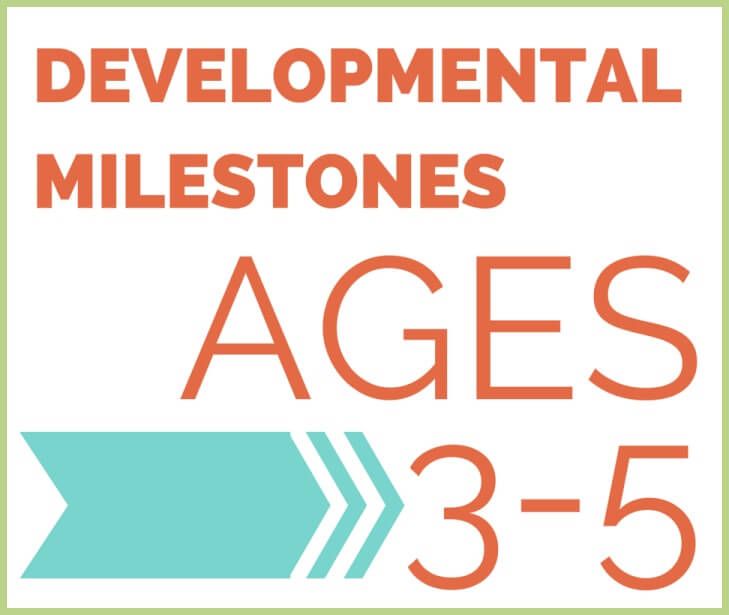 M., 1970. Part 1. S. 95–96; Consolidated catalog of Slavic-Russian handwritten books stored in the USSR. 11th-13th centuries M., 1984. S. 208; L. V. Cherepnin Russian paleography. M., 1956. S. 203–204, 205. Tab. 46.
M., 1970. Part 1. S. 95–96; Consolidated catalog of Slavic-Russian handwritten books stored in the USSR. 11th-13th centuries M., 1984. S. 208; L. V. Cherepnin Russian paleography. M., 1956. S. 203–204, 205. Tab. 46.
[26] PSRL. T. 4. Part 1. Issue. 3. S. 542. It was, one might say, a traditional meeting place for the higher clergy in Novgorod (see Nikitsky A . Essay on the internal history of the Church in Veliky Novgorod. SPb., 1879. S. 103–104).
[27] See Archpriest K. Nikolsky. About the services of the Russian Church, which were in the former printed liturgical books. SPb., 1885. S. 37–38. See also Krasnoseltsev N. On the History of Orthodox Divine Services. Regarding some church services and ceremonies that are no longer in use: Materials and research on the manuscripts of the Solovetsky Library. Kazan, 1889, pp. 12–19; Neselovsky A . Decree. op. C. LV–LVII.
[28] Nasonov A. Pskov chronicles. Issue. 1. P. 104. Similar thoughts are encountered in relation to the Novgorod hierarch Jonah (†1470, commemorated Nov. 5): “There would be peace with all the lands under his hierarchy and silence and blessing of the fruit, and now have mercy on us with his prayers” ( Description of the Slavic Manuscripts of the Moscow Synodal Library, Part 2, Section 3: Liturgical Books, Moscow, 1917, p. 223).
Issue. 1. P. 104. Similar thoughts are encountered in relation to the Novgorod hierarch Jonah (†1470, commemorated Nov. 5): “There would be peace with all the lands under his hierarchy and silence and blessing of the fruit, and now have mercy on us with his prayers” ( Description of the Slavic Manuscripts of the Moscow Synodal Library, Part 2, Section 3: Liturgical Books, Moscow, 1917, p. 223).
[29] PSRL. T. 3. S. 148.
[30] Stroev P . Decree. op. Stb. 35.
[31] Veselovsky S. B . Studies in the history of the class of service landowners. M., 1969. S. 250.
[32] RSL. F. 256. No. 9. L. 1v.–2. The presence of Muscovites at this time is noticeable in Novgorod. In 1529, the Colored Triode was copied there “by the hand of the sinful servant of God Yakov Moskvitin” (NGM. No. 10857. Color triode of the 16th century. L. 278).
[33] Volnyansky N. (pseudonym). Metropolitan Macarius - the light of Russian culture of the 16th century // ZhMP. 1947. No. 6. P. 27.
1947. No. 6. P. 27.
[34] PSRL. T. 3. S. 148; see also note. 3 on p. 157.
[35] The next such case took place in the 17th century, when Metropolitan Nikon of Novgorod became the All-Russian Patriarch. For their relationship, see Archimandrite Macarius. All-Russian Metropolitan Macarius and His Holiness Patriarch Nikon // Makariev Readings. Monasteries of Russia: Proceedings of the VII Russian scientific conference dedicated to the memory of St. Macarius. Mozhaisk, 2000, pp. 28–33.
[36] PSRL. T. 3. S. 248.
[37] PSRL. T. 34. S. 179.
[38] AI. T. 1. St. Petersburg, 1841. P. 329.
[39] PSRL. T. 13. Part 1. P. 142.
[40] GPNTB. Sobr. M. N. Tikhomirova. No. 15. Chronicler of the Rostov bishops. 18th century L. 13 about.
[41] RGADA. F. 201. Collection. K. M. Obolensky. No. 161. Menaia of honor. 16th century L. 617 ff.; AAE. T. 1. S. 158–162: Georgievsky G. Festive services and church celebrations in old Moscow. SPb., 1899. S. 227–238.
SPb., 1899. S. 227–238.
[42] Uspensky B. A. Tsar and Patriarch. Charisma of power in Russia (Byzantine model and its Russian rethinking). M., 1998. S. 519; Sinitsyna N. V . Autocephaly of the Russian Church and the establishment of the Moscow Patriarchate (1448-1589) // Church, society and state in feudal Russia. Sat. articles. M., 1990. S. 146.
[43] The Life of St. Daniel, the Wonderworker of Pereyaslavl. The Tale of the Finding of Relics and His Miracles / Ed. prof. S. I. Smirnova . Moscow, 1908, p. 66.
[44] See Golubinsky E. E . Decree. op. pp. 761–763.
[45] Metropolitan Varlaam died in 1533 in the Spaso-Stone Monastery of the Vologda diocese. Metropolitan Daniel died in 1547 in the Joseph-Volokolamsk Monastery. Metropolitan Joasaph died in 1555 at the Trinity-Sergius Monastery.
[46] It can be said that the events of Russian history of the XIV and XVI centuries overlap. In 1353, Prince Simeon the Proud died, after him Ivan the Red (1353–1359) reigned, then the young prince Dimitry Donskoy, who was born in 1350. Metropolitan Alexy plays an important role under the young prince. Something similar happened in the 16th century. In 1533, Vasily III died, after whom was his wife Elena Glinskaya († 1538). Then began the reign of John IV, born in 1530. As a result of the weakening of sovereign power and the beginning of discord among the boyars, it was reduced in 1539year from the throne, Metropolitan Daniel, and in 1542 - Metropolitan Joasaph. The Metropolitan Macarius, who was later installed, like St. Alexis, pacified the boyar discords by his primatial efforts and deeds of prayer.
Metropolitan Alexy plays an important role under the young prince. Something similar happened in the 16th century. In 1533, Vasily III died, after whom was his wife Elena Glinskaya († 1538). Then began the reign of John IV, born in 1530. As a result of the weakening of sovereign power and the beginning of discord among the boyars, it was reduced in 1539year from the throne, Metropolitan Daniel, and in 1542 - Metropolitan Joasaph. The Metropolitan Macarius, who was later installed, like St. Alexis, pacified the boyar discords by his primatial efforts and deeds of prayer.
Since you are here...
We have a small request. This story was told thanks to the support of readers. Even the smallest monthly donation helps editorial work and create important content for people.
Your help is needed now more than ever.
Go to the main page of Alpha and Omega magazine
Historical milestones
I prefer to be remembered
for the things I have done for others, and not
for me for the things others have done.
Jefferson T.
The bus raced along the highway along the Poronaysk - Yuzhno-Sakhalinsk route, but I didn’t want to admire the scenery, and there was no such possibility - rain, fog ... I nervously looked at the clock, one thought haunted : "Can we make it? After all, we left half an hour later ... "This is how the master of the adventure genre would begin his story, but for us, specialists from the central library and members of the Poronai local public organization of pensioners, it was just a trip to the concert of the State Cossack Song and Dance Ensemble "Stavropol". She wrote “only” and thought: this verbal turn does not fit here, because what was the cost of her organization alone: the creation of the “Third Age” project, bringing it to the jury, agonizing waiting, full of doubts, what if something puts? And now ... I admit right away that on this day we, 25 women, did not have to decorously and nobly put ourselves in order - we flew into the concert hall of the Chekhov Center literally at the last second.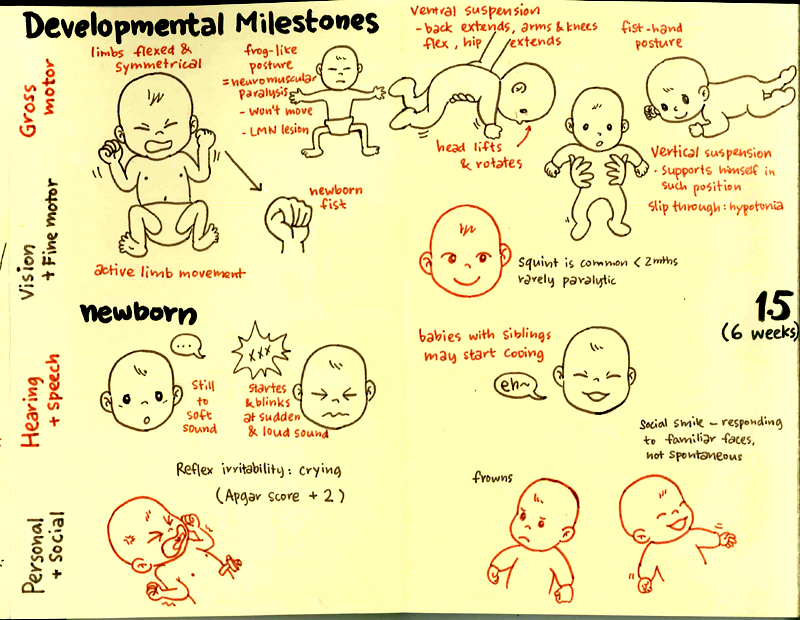 Before we had time to take a breath, the lights went out, and ... the holiday began! The bright concert lasted an hour and a half, the members of the ensemble performed more than a dozen original numbers. Colorful Cossack costumes, amazing voices, amazing choreographic compositions…
Before we had time to take a breath, the lights went out, and ... the holiday began! The bright concert lasted an hour and a half, the members of the ensemble performed more than a dozen original numbers. Colorful Cossack costumes, amazing voices, amazing choreographic compositions…
- Ljubo, Cossacks! - cheerfully was distributed from spectator rows.
We enthusiastically met every concert number of the collective, which arrived in Sakhalin as part of the grand creative project “Memory is stronger than time”, dedicated to the 70th anniversary of the Victory in the Great Patriotic War, the labor feat of the inhabitants of the Urals, Siberia, the Far East and the end of the Second World War .
Overwhelmed with emotions, we left the hall, and the celebration continued on the square, - Igor Nikolaev spoke, but I didn’t want to listen to him after the enchanting and so congenial Stavropol Territory ...
It should be added that this trip was made possible thanks to the project of the organization, and due to the indefatigability of the chairman of the PMOOP L. M. Chernova, and thanks to such caring people as the director of SKOSHI N.V. Kolupaev, and to many other people whose joint efforts make everything possible...
M. Chernova, and thanks to such caring people as the director of SKOSHI N.V. Kolupaev, and to many other people whose joint efforts make everything possible...
In the morning our bus again raced along the Yuzhno-Sakhalinsk-Poronaysk route. We hurried to the village of Vostok, where the festive opening of the Square of Memory, laid out as part of the "You Can't Forget" project (grant from the Government of the Sakhalin Region), was to take place. Sakhalin September finally justified itself: the clouds dissolved, and the sun shone with might and main. The East celebrated Village Day! The hosts of the opening ceremony of the square Zagoruiko N. L. and Krivosheina E. V., congratulating fellow countrymen on such a significant event, granted the right to cut the symbolic scarlet ribbon to the head of the territorial administration of the village. East of the administration of the Poronai city district Mitriku D.G., who, after the solemn procedure, wished the village further prosperity. The stole was removed from the memorial stone, the words of Ilya Ehrenburg appeared before the audience: “They say that the war does not end while at least one of its soldiers is alive. But even after centuries people will remember those terrible and great years - 1941, 1942, 1943, 1944, 1945…”, kind words were said to the project performers, poems were read and songs were sung… to sit alone, think and remember... And this is the most important thing!
The stole was removed from the memorial stone, the words of Ilya Ehrenburg appeared before the audience: “They say that the war does not end while at least one of its soldiers is alive. But even after centuries people will remember those terrible and great years - 1941, 1942, 1943, 1944, 1945…”, kind words were said to the project performers, poems were read and songs were sung… to sit alone, think and remember... And this is the most important thing!
“Your job is quiet,” I often hear, “you sit in the library, you give out books…”, but the events taking place in the life of the Poronai library community testify to the opposite.
During 2015, the Poronai Centralized Library System implemented 5 (!) projects, most of them on the 70th anniversary of the Victory are associated with this great date. We have repeatedly talked about the banner alley, which was triumphantly demonstrated in almost all settlements of the Poronaysky district on the eve of Victory May (Live and Remember project of Sakhalin Energy), but in addition to holding this spectacular event, each of the libraries received an exhibition of the same name a set of mini-posters about countrymen heroes. It was the release of these exposition materials that pushed us with the Poronai local public organization of pensioners to another project, the thematic outline of which again became the memory of the past. The video presentation of the book “Our Memory: Monuments and Memorable Places of the Poronai District” (the project “Our Memory” was funded by the Government of the Sakhalin Region - author's note) took place during a festive event dedicated to the assignment of the status of a model central library, but at that time the book had only been launched in seal. Today, I can proudly say that the album's replication has been completed, and the book itself has even been assigned an international standard book number (ISBN). What does this mean? Books that have received such a unique number are registered in different catalogs, and individual copies of publications end up in the country's largest libraries. At the time of writing the article, the book itself was still in the printing house, but the signal copies were received by Lyudmila Mikhailovna Chernova, who, seeing the first finished edition, commented on it like this: “This scarlet little book with golden letters is a real gift to the district! This book is a holiday!
It was the release of these exposition materials that pushed us with the Poronai local public organization of pensioners to another project, the thematic outline of which again became the memory of the past. The video presentation of the book “Our Memory: Monuments and Memorable Places of the Poronai District” (the project “Our Memory” was funded by the Government of the Sakhalin Region - author's note) took place during a festive event dedicated to the assignment of the status of a model central library, but at that time the book had only been launched in seal. Today, I can proudly say that the album's replication has been completed, and the book itself has even been assigned an international standard book number (ISBN). What does this mean? Books that have received such a unique number are registered in different catalogs, and individual copies of publications end up in the country's largest libraries. At the time of writing the article, the book itself was still in the printing house, but the signal copies were received by Lyudmila Mikhailovna Chernova, who, seeing the first finished edition, commented on it like this: “This scarlet little book with golden letters is a real gift to the district! This book is a holiday!
Another valuable publication that appeared as part of the joint project activities of the model central library and PMOOP was a set of brochures under the general title "On the heroes of bygone times" (the project was funded by the Ministry of Sports, Tourism and Youth Policy of the Sakhalin Region - author's note). It includes a collection of stories by Grigory Oshchenko “I went to the front from school ...”, “The Return of Alexei Dakhno”, “School squads bore their names”, “Ivan Gorbunov’s front-line notebook”, “Names on the city map” - in these small according to the format of the books, the history of the Poronai region is again presented to the reader through human destinies.
It includes a collection of stories by Grigory Oshchenko “I went to the front from school ...”, “The Return of Alexei Dakhno”, “School squads bore their names”, “Ivan Gorbunov’s front-line notebook”, “Names on the city map” - in these small according to the format of the books, the history of the Poronai region is again presented to the reader through human destinies.
The activities of the organization of pensioners and libraries of the Central Library Library on patriotic projects have been completed, but there is still a lot of work ahead and, in particular, the implementation of the project “Give happiness to children” of the Foundation for Supporting Children in Difficult Life Situations. Within its framework, classes are held at the Parents' Lecture Hall, children's events, and over the weekend, the Vostok Model Library organized a game program called "It's a holiday in the house!" The participants of the event were children from different families: foster families, families with many children. And here's how the manager tells about this event. library Zagoruiko N. L.: “Teams were formed from the guys who had to not only play, compete in ingenuity, creativity and even cunning! It is not so easy to maintain a home, family warmth. This is stated in folk proverbs and sayings, which the teams had to correctly put together from two halves, but we, librarians, saw in which family they often turn to folk wisdom. A family is, as a rule, not only mom, dad and children. There are many different relatives in the family, and each has its own family title. The children had to remember who belongs to whom and who. Almost every house has small libraries, because, despite the fact that we all love to watch TV, we own computer technologies, it is clear that without a book “we cannot live in this world”! In the next competition, the teams were tested on their knowledge of children's literature. The guys in the competitions had to be able to quickly and correctly make the right decisions, to be united, friendly.
And here's how the manager tells about this event. library Zagoruiko N. L.: “Teams were formed from the guys who had to not only play, compete in ingenuity, creativity and even cunning! It is not so easy to maintain a home, family warmth. This is stated in folk proverbs and sayings, which the teams had to correctly put together from two halves, but we, librarians, saw in which family they often turn to folk wisdom. A family is, as a rule, not only mom, dad and children. There are many different relatives in the family, and each has its own family title. The children had to remember who belongs to whom and who. Almost every house has small libraries, because, despite the fact that we all love to watch TV, we own computer technologies, it is clear that without a book “we cannot live in this world”! In the next competition, the teams were tested on their knowledge of children's literature. The guys in the competitions had to be able to quickly and correctly make the right decisions, to be united, friendly.



